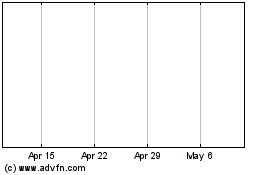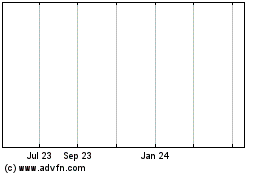US Judge Approves Lehman-JP Morgan Deal To Slash $710 Million Claim
February 15 2012 - 12:05PM
Dow Jones News
A judge on Wednesday signed off on a deal between J.P. Morgan
Chase & Co. (JPM) and Lehman Brothers Holdings Inc. (LEHMQ)
that calls for J.P. Morgan to slash most of a $710 million claim it
filed against Lehman's bankruptcy estate, money that Lehman plans
to distribute to creditors soon.
Judge James Peck of U.S. Bankruptcy Court in Manhattan approved
the deal, which is related to J.P. Morgan's third-party investment
funds and which gives $699.2 million of that claim to Lehman. In
return, J.P. Morgan will have some other claims reinstated and get
$15 million in cash. The settlement will have no financial impact
on J.P. Morgan, the bank has said.
Lehman sought a fast hearing on the settlement, disclosed in
court papers on February 1, so it could distribute the money to
other creditors quickly. It still wants to make its first
distribution by the end of the first quarter.
While Lehman believes it would have prevailed in fighting the
claims, it was cognizant of "avoiding the costs, delays and
litigation risks," said Lehman lawyer L.P. Harrison III of Curtis,
Mallet-Prevost, Colt & Mosle LLP.
Peck said of the settlement, "The benefits are obvious."
The $710 million is actually a rather small chunk of a larger
dispute between Lehman and J.P. Morgan, as Lehman is also trying to
drastically reduce nearly $30 billion in other claims that J.P.
Morgan has filed in the Chapter 11 case.
Aside from the claims' dispute, the two sides are suing each
other over what happened in the tumultuous days of September 2008,
with Lehman alleging that J.P. Morgan illegally siphoned billions
of dollars from Lehman just before the bankruptcy and J.P. Morgan
countering that Lehman used "collusion and deception" when it told
J.P. Morgan that an emergency loan it made was backed by $70
billion in securities.
Peck on Wednesday also granted U.S. bankruptcy protection to
Lehman's Australian subsidiary, a move that protects Lehman
Brothers Australia Ltd. from lawsuits or creditor attempts to seize
its U.S. assets. Under Chapter 15, a feature added to the U.S.
bankruptcy code in 2005, a company such as Lehman Australia can
seek a U.S. bankruptcy court's recognition of its foreign
bankruptcy case as the main proceeding.
Lehman Australia said in its bankruptcy petition last month that
it has $1.3 billion in claims against Lehman's holding company for
losses related to structured finance arrangements known as
synthetic collateralized-debt obligations, or CDOs.
Recognition of the foreign bankruptcy proceeding is often simply
procedural, but it is of interest here because of differing court
rulings on different continents over complex derivatives
arrangements.
Investors in Australia are suing Lehman Australia over losses
associated with synthetic credit-linked notes issued by a
Lehman-sponsored vehicle called Dante. The Australian unit said it
may have claims against its U.S.-based parent if investors succeed
in the lawsuit. In addition, Lehman's U.S. bankruptcy estate and
the Australian investors have laid claim to collateral backing the
notes.
The Australian subsidiary's bankruptcy is the latest part of
what has become a contentious argument in the U.S. and in Europe
regarding what are known flip clauses in credit-derivative
contracts, which, if honored, would allow companies to jump ahead
of Lehman and grab the assets backing the derivatives in those
deals.
A 2009 English High Court ruling called for investors to be put
ahead of Lehman so they could be repaid. But Peck said that was the
wrong thing to do, ruling that the flip clauses violated U.S.
bankruptcy law.
Peck's decision on flips, which he acknowledged "may be a
controversial one," upset expectations in the market for
collateralized-debt obligations and other structured-finance deals,
forcing investors to forgo billions of dollars in collateral.
In another case involving the derivatives, the U.K. Supreme
Court last summer ruled again in favor of investors.
Peck in early December approved Lehman's creditor-payback plan,
which should distribute about $65 billion and treats creditors of
Lehman subsidiaries better than those of the parent company.
Despite confirmation of the plan, the company still has billions
of dollars in real estate and other assets and will continue to
exist as it unloads and manages those investments. Last month,
Lehman said it wants to begin distributing about $10.7 billion to
its creditors soon, hopefully by the end of the first quarter.
(Dow Jones Daily Bankruptcy Review covers news about distressed
companies and those under bankruptcy protection.)
-By Joseph Checkler, Dow Jones Newswires; 212-416-2152;
joseph.checkler@dowjones.com
Lehman (NYSE:LEH)
Historical Stock Chart
From Mar 2024 to Apr 2024

Lehman (NYSE:LEH)
Historical Stock Chart
From Apr 2023 to Apr 2024
